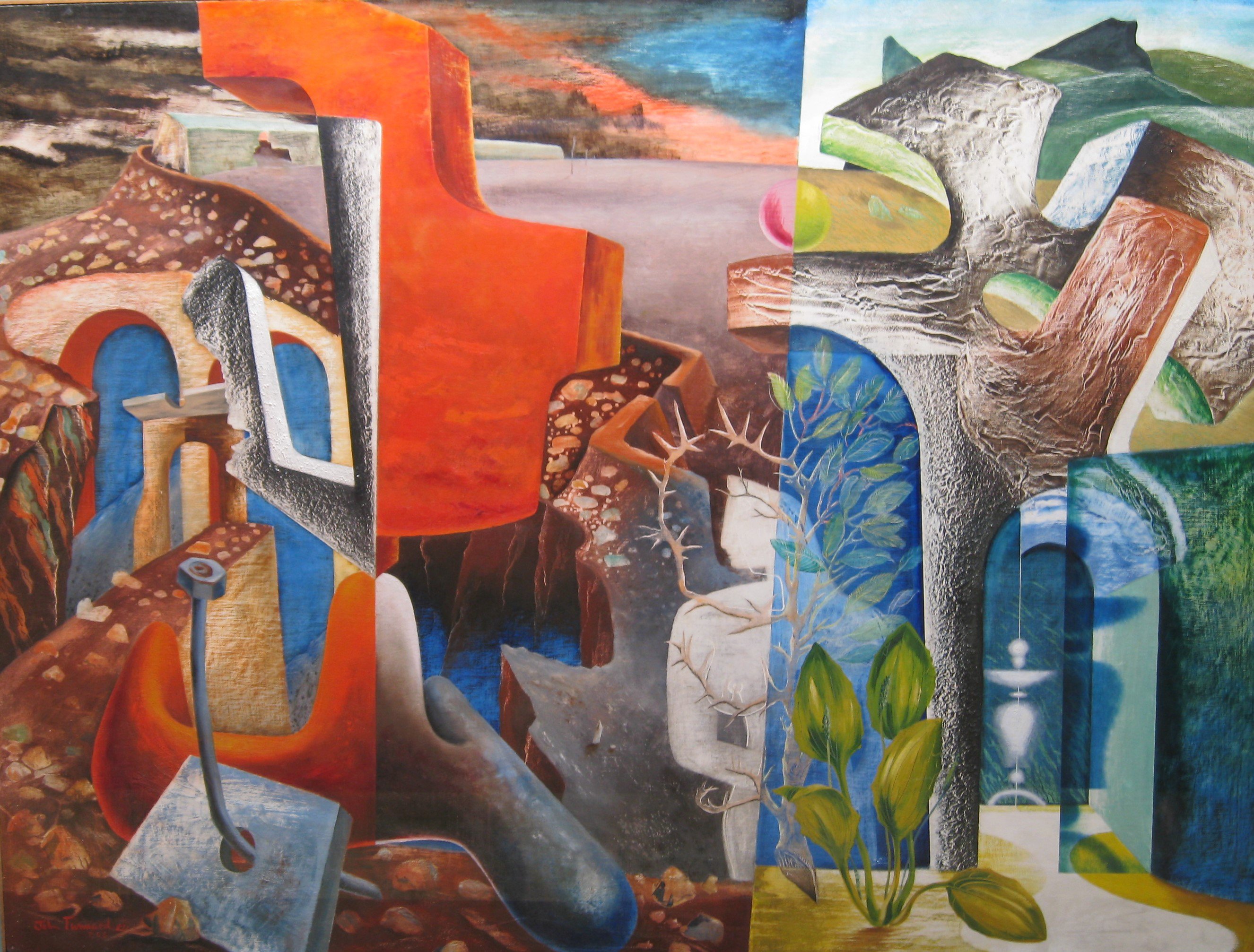11. Return, by John Tunnard
 John Tunnard, Return, 1951. Oil on gesso-prepared canvas. 114.3 x 152.4 cm
John Tunnard, Return, 1951. Oil on gesso-prepared canvas. 114.3 x 152.4 cm
Return by John
Tunnard (1900-1971), painted in oil on gesso-prepared canvas, was
commissioned for the 1951 Arts Council exhibition ‘Sixty Paintings for 51’,
staged as part of the Festival of Britain. The Festival was intended to
showcase the best of British art, and to project a positive, forward-looking,
forward-thinking image of Britain in the aftermath of the Second World War.
Science and technology, and a conjunction of surrealist and
abstract aesthetics had informed Tunnard’s work throughout the late 1930s and
1940s, so it is interesting that in Return,
Tunnard turns back to more figurative, neo-Romantic work. He turns away from
his preoccupation with modern science to the ancient history of Cornwall, where
Tunnard and his wife had lived since 1933.
Return can be
described as a triptych, divided into three sections with some overlap and
intersections. The left section depicts an industrialized landscape of metals
with the striking image of a nail, apparently obsolete, in the foreground. The
central section shows a deserted coastline with a dramatic oxidised shape and a
sky that recalls the Romantic scenes of William Blake’s paintings. There is
part of a human figure (a rare element in Tunnard’s work), white, and framed by
petrified thorns which, in the right section become lively foliage against a
more harmonious set of natural forms that interlock. Amid the greens and blues
of this section is the glowing form of a vase. This imagery is saturated with
significance: the nail and thorns ceding to the calm of the hills and the arch
on the right alluding to the Crucifixion and Resurrection. At the same time,
the collective imagery and the delineation of stages also recalls the Arthurian
legend of the Fisher King, the last in a long line of kings charged with
keeping the Holy Grail. When he is wounded, the kingdom suffers, falling into a
wasteland that is only recovered by the knight Perceval, who alone is able to
restore the fertility of the land.
In this light, the work becomes an allegory for the recovery
of Britain in the aftermath of war, but it might also be read as a conflict
between the natural and industrial, a conflict that in recalling Blake, Tunnard
positions as older and bigger than the present moment. The interjections of
solid, geometric forms into this narrative imagery position Return within the vocabularies of
abstraction that much of Tunnard’s work was concerned with. These shapes almost
overtake the representational, and at the same time are indicative of the kind
of uncanny surrealist landscape in which elements are brought together to
unsettle or undermine the balance or coherence of the work.
However, there is a central point of stability amongst the jostling
elements of Tunnard’s design. Existing in both the central and right section is
a ball, suspended above water, land, coast, shape. The circular shape opposes
the rougher, morphing forms of the rest of the work, and its suspension
suggests a weightlessness that is fragile, even tenuous. And yet the whole
composition revolves around this ball, holding the disparate and conflicting
parts in its suspended moment.
Tunnard’s oeuvre is a constant exploration of vocabularies
of perception and knowledge – which perhaps makes it no surprise that it was
the philosopher Peter Hacker who acquired Return
for St John’s College. The work is currently hanging in the Garden
Quad Reception room, and at 114.3 x 152.4 cm, it dominates the space. As the
former Keeper of Pictures, Professor Paul
Tod, notes, in a sense Garden Quad was built around it. And it remains a
forward-thinking picture: bound up with renewal, history, the environment, and
the aesthetic struggle with representation.
For another artist of this period, see: https://www.hoa.ox.ac.uk/event/image-and-object-at-home-week-6
 Dr Jennifer Johnson, Junior Research Fellow in History of Art
Dr Jennifer Johnson, Junior Research Fellow in History of Art